CSotD: A Literal Labor Day
Skip to comments
Douglas Rodger saluted American workers with this Labor Day cartoon in the San Francisco News a century ago, but, in Chicago, my grandmother was involved in a different sort of labor, and I am rising to a point of personal privilege today.
In those days, fathers were banished to the waiting room, and so in a salute to my mother, who is still around on her 100th birthday, here are some cartoons her father might have read while awaiting news from the nurses.

Being Chicago Irish was somewhat more Irish than being from, say, Dublin, and George McManus had already spent a decade exploring the Irish-American identity with shanty-Irish Jiggs and his lace-curtain, social-climbing wife Maggie in Bringing Up Father.

And Little Orphan Annie was, at the point, barely a month in existence, still little and very much an orphan. I didn’t even know there was a Mrs. Warbucks, but it doesn’t appear I missed a lot by not having made her acquaintance.

Andy Gump was running for office, but he wasn’t going to speak on that new-fangled radio and have half his words drowned in static or competing with jazz.
Meanwhile, on the Upper Peninsula, my father was a four-year-old referred to as “Skeezix” by his parents, since he had been born shortly after Walt Wallet discovered a foundling on his porch in Gasoline Alley. Yes, Rachel was an extremely unfortunate stereotype of the era. At least she appeared to have been treated with some affection.

Another youngster in the comics was Freckles, who at this stage was a little fellow but would grow into a teen who rivaled Harold Teen and, a few decades later, Archie.

And speaking of stereotypes, Dumb Dora was a flapper whose silly hijinx were typical of a style of strip in that era. The artist on this strip would later abandon it in favor of another flapper named Blondie Boopadoop, who married a fellow named Dagwood Bumstead. Perhaps you’ve heard of them.

Another flapper in the funnies was Fritzi Ritz, whose originator, Larry Whittington, would hand the strip over to Ernie Bushmiller in another year. In 1933, Bushmiller added Fritzi’s niece Nancy to the cast and the focus shifted notably.

Little Mary Mixup was a sign of the future, one of the first funny brat characters who would spawn Nancy as well as Little Iodine and other mischievous kids.

Polly and her Pals were a constant headache to her long-suffering father, one of several strips featuring a carefully crafted pretty girl with other characters being more cartoonish.

Toots and Casper was another in which the female lead was more attractive than, in this case, her husband, while Gas Buggies featured cars and domestic comedy in place of domestic bliss. Note, by the way, that Gas Buggies was drawn by Frank Beck, not to be confused with Billy de Beck, whom we’ll encounter in a bit.

Tillie the Toiler featured a working girl, though not in the most flattering light and, again, Tillie was drawn in pretty-girl fashion but surrounded by a cartoonish cast.
Meanwhile, Abie the Agent was an ethnic character, a decidedly Jewish character with a Yiddish accent, drawn by a Jewish cartoonist.

Another professional on the funny pages was Louie the Lawyer, drawn by M.M. Branner.

Branner would abandon Louis in order to concentrate on Winnie Winkle, the Breadwinner, who was a much more focused working woman than her flapper cohorts. Winnie starred in continuing stories that combined a bit of light humor with more suspenseful arcs as she strove to support herself and her family.
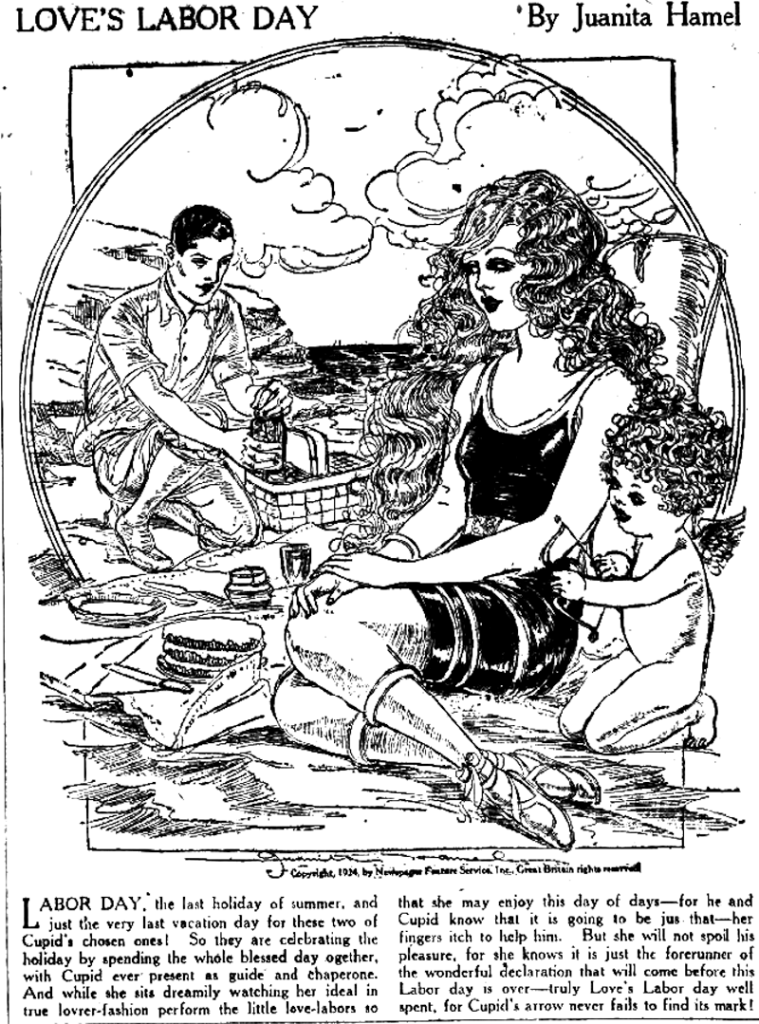
Real women also worked in the trade, and Juanita Hamel contributed to a popular romance panel.
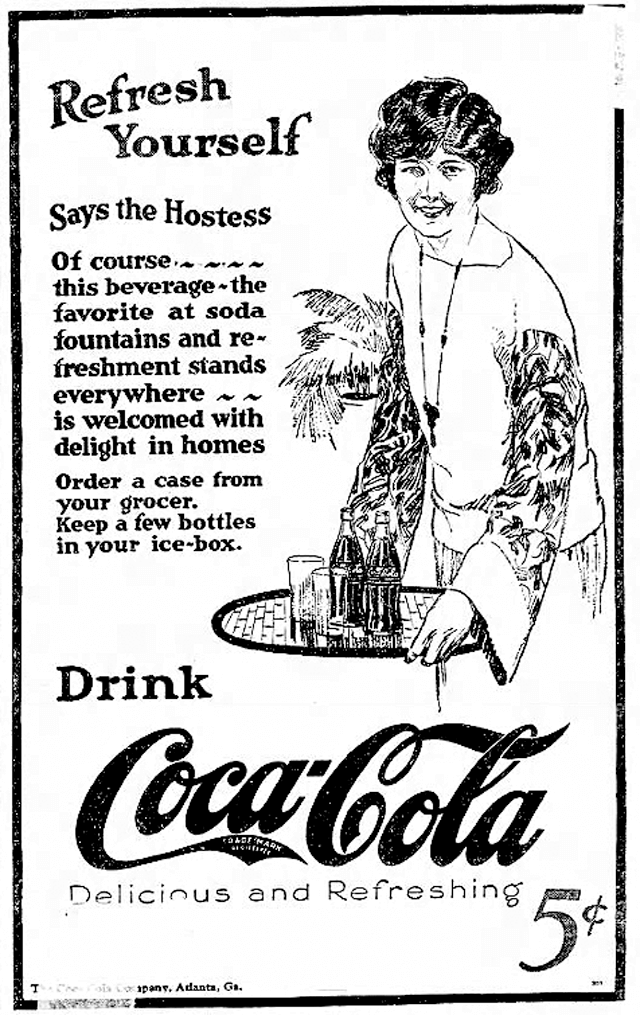
Let’s pause for a word from our sponsor.

Jerry on the Job featured a type of child echoed by several artists, including Harold Gray, who did not invent young people without pupils in their eyes.
And at this point, Barney Google was the star of Barney Google and the strip had not yet been taken over by his country pal, Snuffy Smith. (Now we see the work of the prolific Billy de Beck.)
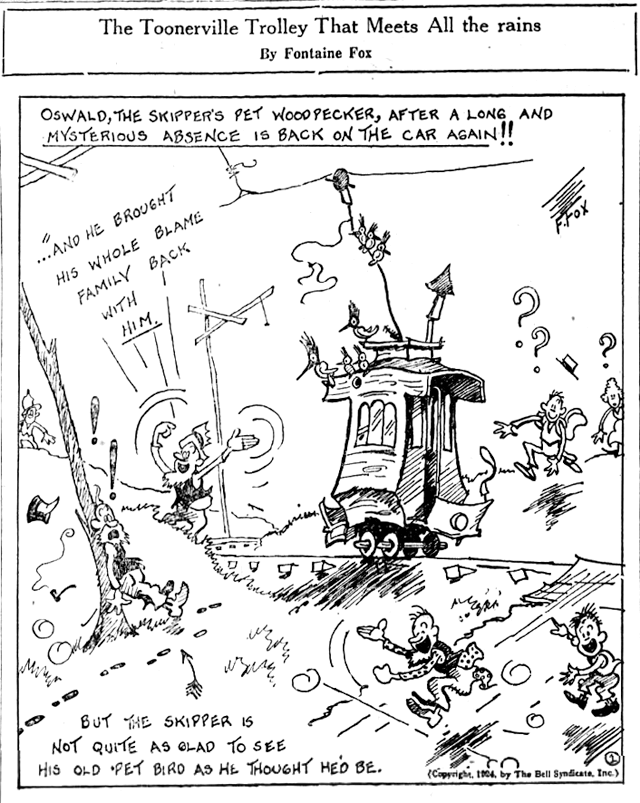
Another archetype of the era was Fontaine Fox’s incredibly popular Toonerville Trolley. When I was a kid in the ’50s, amusement parks often had a Toonerville Trolly ride, the panel having run from 1908 to 1955.
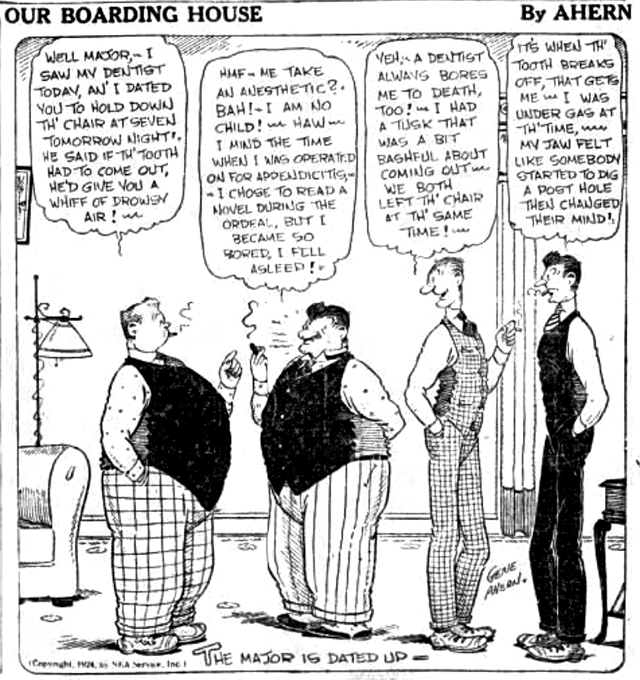
Another popular panel was Our Boarding House, which had become dominated by the braggart buffoon, Amos Hoople, who fooled none of the other boarders with his tales of bravery and achievement.

But it would be five years before a certain sailor would join the cast of Thimble Theatre, which at this point focused on Castor Oyl and his ill-tempered antics.
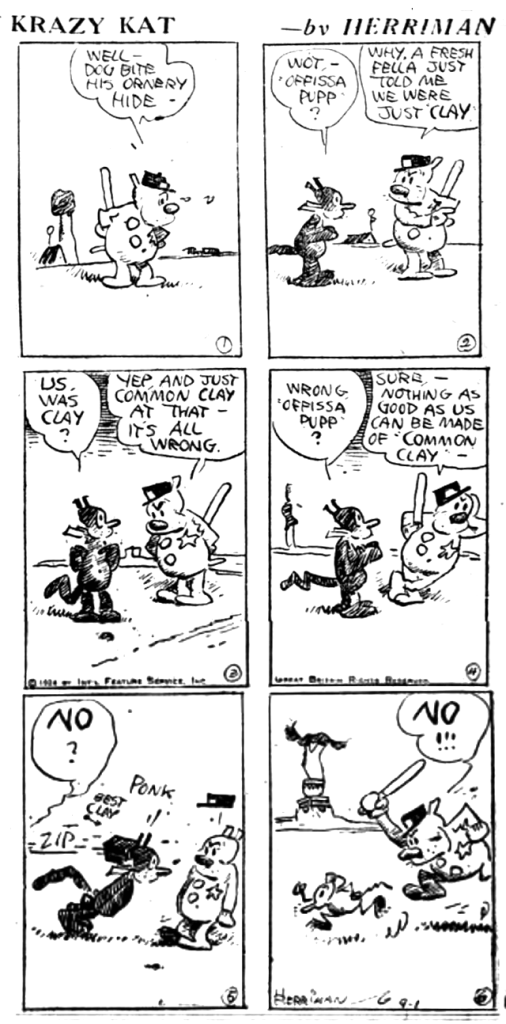
But another classic character, Krazy Kat, was up and running a century ago.
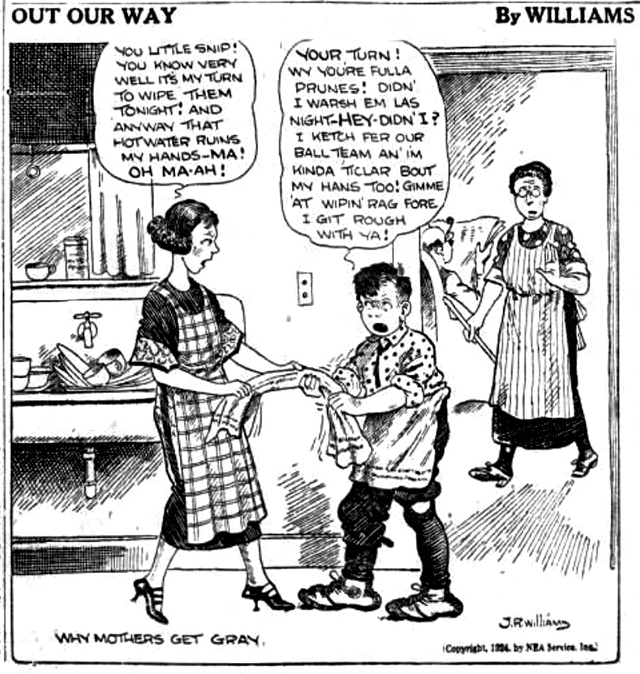
Slice-of-Life panels were also popular, with Out Our Way one of the best in a crowded category.
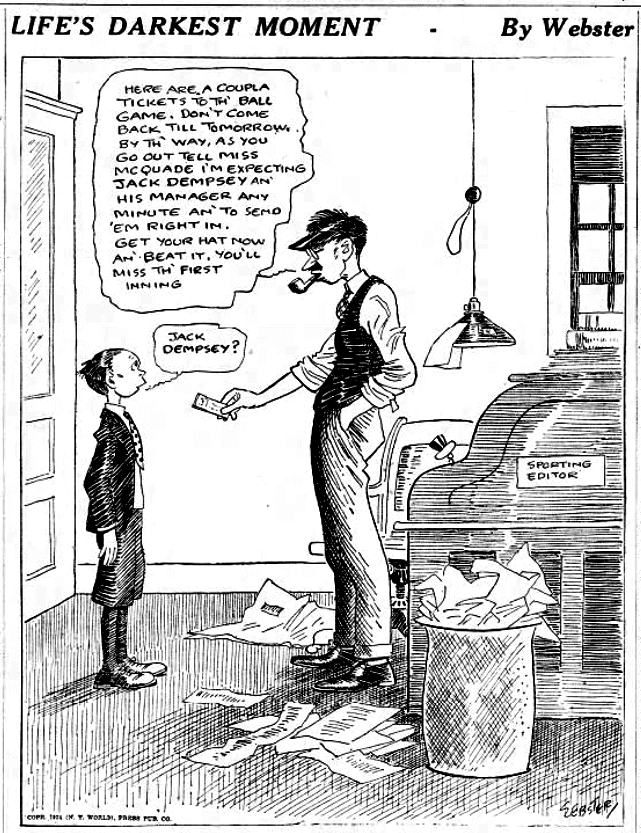
H.T. Webster drew a number of cartoons, Life’s Darkest Moments being one, with horrors like being sent out of the office just before Jack Dempsey was due to drop by. Always nice to get free tix to the ball game, but … but … but …

Gluyas Williams was a master of what would in future generations be called “observational humor,” marking small moments in life. It was a style of humor also popularized by Clare Briggs and, in prose, Robert Benchley.

September 1, 1924 was a Monday, so there was no Little Nemo that day. Not sure how the San Francisco Bulletin got to claim an exclusive, but the strip had just resumed its run in the NY Herald, on Sundays.
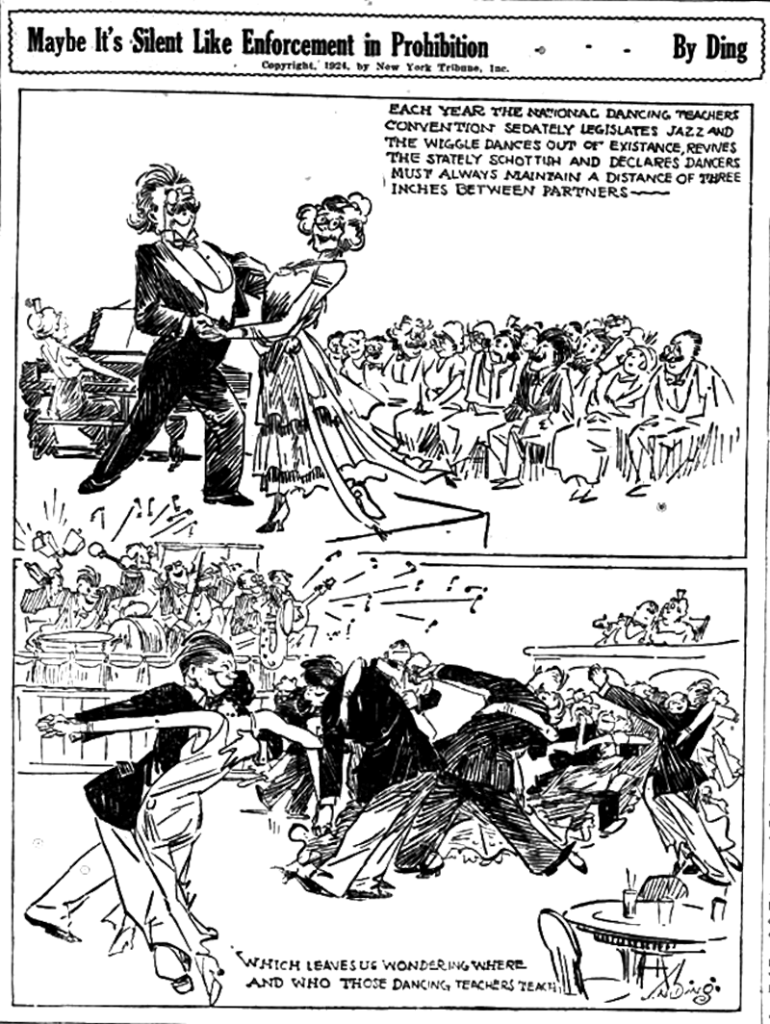
I hope my grandfather got a look at Ding Darling’s commentary on the state of dancing and music, and, if so, I hope he laughed, because in 18 years, his daughter would not only be clubbing with my dad in Boston to the music of Benny Goodman, Harry James and Glenn Miller, but spinning their records as a disc jockey, president and one of the founders of Radio Radcliffe.
How quickly they grow up!
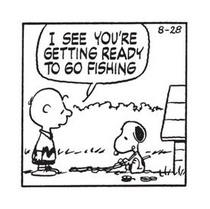

Comments 10
Comments are closed.